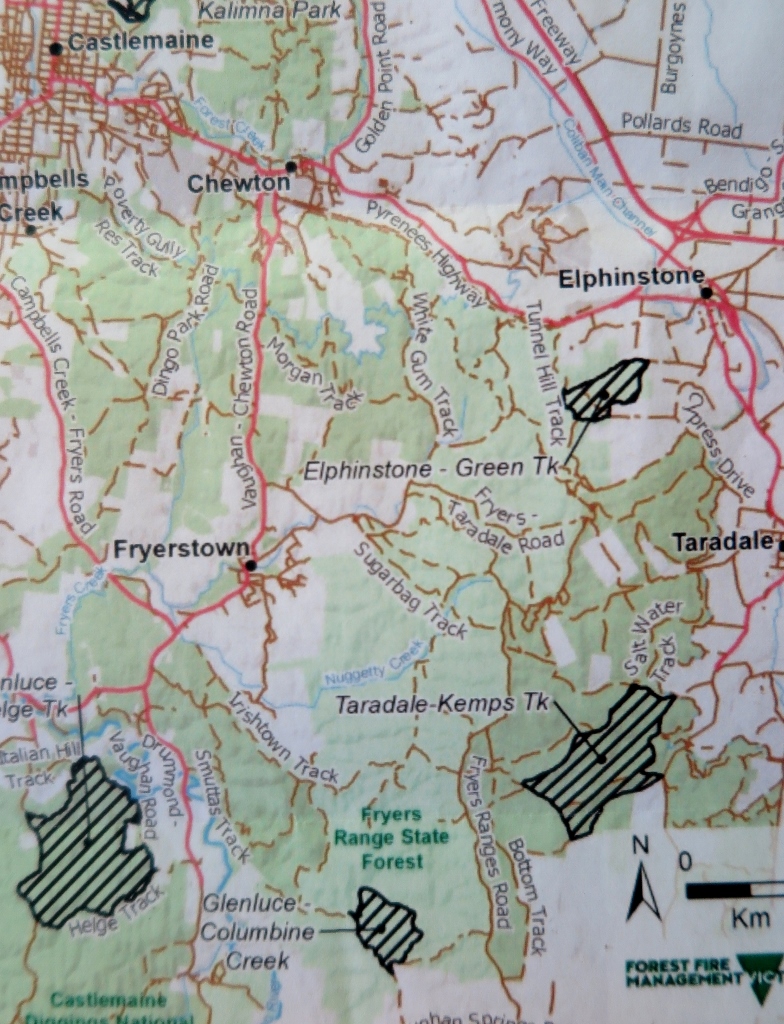Mount Alexander Shire residents may have received a couple of DELWP leaflets in their letter boxes last week, informing them of upcoming management burns. All are fuel reduction exercises—ecology is a secondary consideration, if it’s a consideration at all. For that reason FOBIF has been concerned to quiz the Department as to the actual fuel reduction achievements in its previous burns. On that score we’re very sceptical, but try as we may, we can’t get DELWP to tell us frankly what they think they’ve achieved.
This is the related map, showing where burns are proposed:
You can check FOBIF’s submissions on this program here.
FOBIF is concerned, as always, by the detail of implementation of these exercises. In particular, we believe that the larger area burns are far too big to manage in detail. The Helge Track burn is 344 hectares, and the one proposed for the following year along Wewak Track is 470 hectares! We are convinced that ‘reduction’ burns conducted in this area over the last 20 years have actually generated more fuel. Questioned about this, fire officers have been… non committal, though we were interested to get the following admission from DELWP last year:
‘We have also observed that lower intensity burns seem to not generate as much fuel and accumulate fuels slower than burns that are generally burnt hotter. In addition, lower intensity burns generally maintain the Overall Fuel Hazard (OFH) levels under triggers for more years than higher intensity burns.’
Let’s hope that means an improvement in methods over those of the (sometimes) disastrous past.





 Click on image for info/order page
Click on image for info/order page Click on image for info/order page
Click on image for info/order page Click on image for info/order page
Click on image for info/order page




















